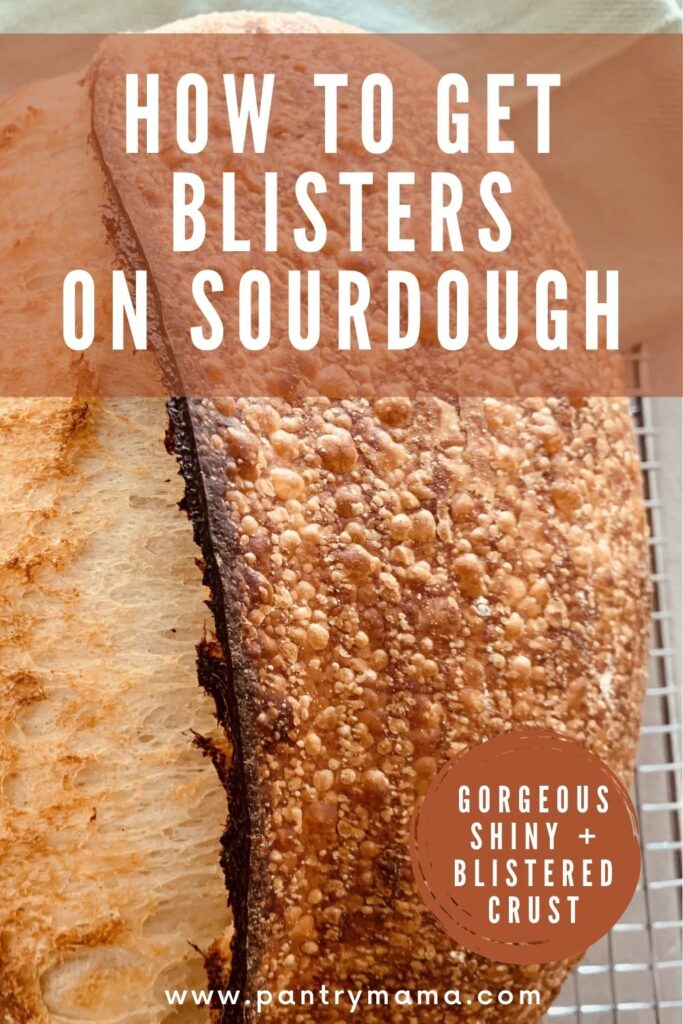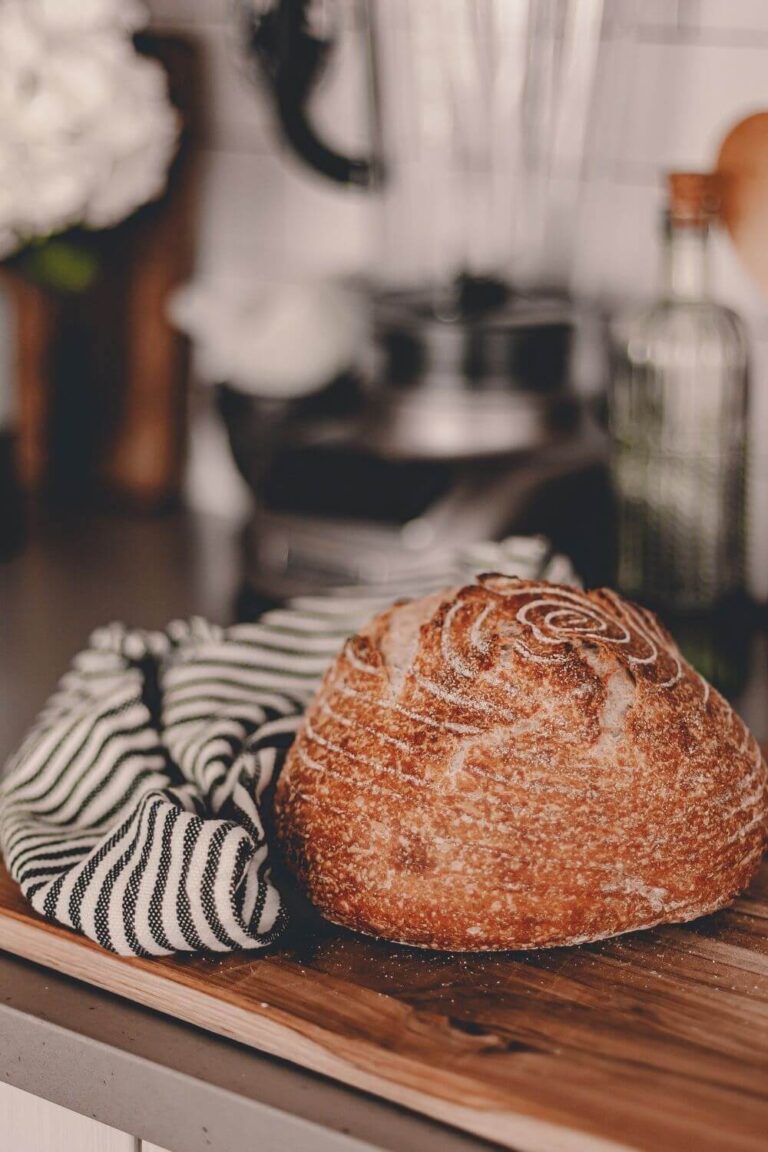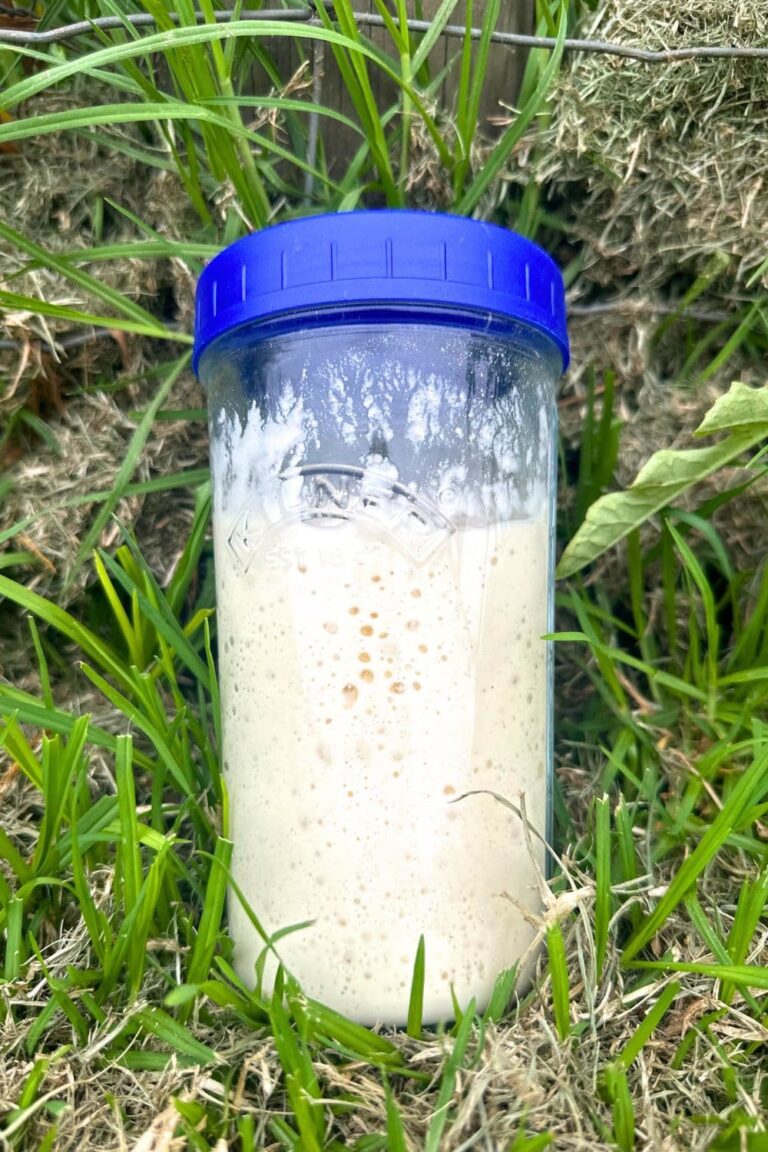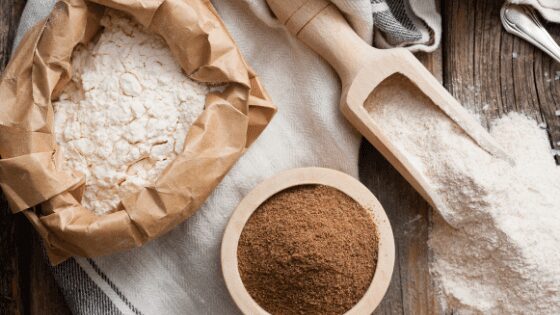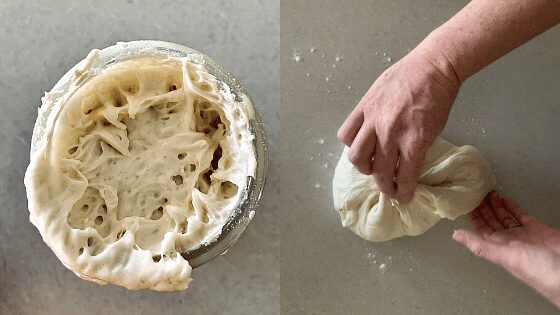How To Get Blisters On Sourdough Bread
This post may contain affiliate links.
I want to show you how to get blisters on sourdough bread.
It's not difficult and you'll have the most amazingly shiny and blistered crust. It will take the flavor of your sourdough next level!
Some people love the blisters, others hate them.
I have always had blisters on my bread, even when I haven't tried to get them.
To me they are indicative of good sourdough bread!
So let's dive in and see how to get blisters on sourdough bread!
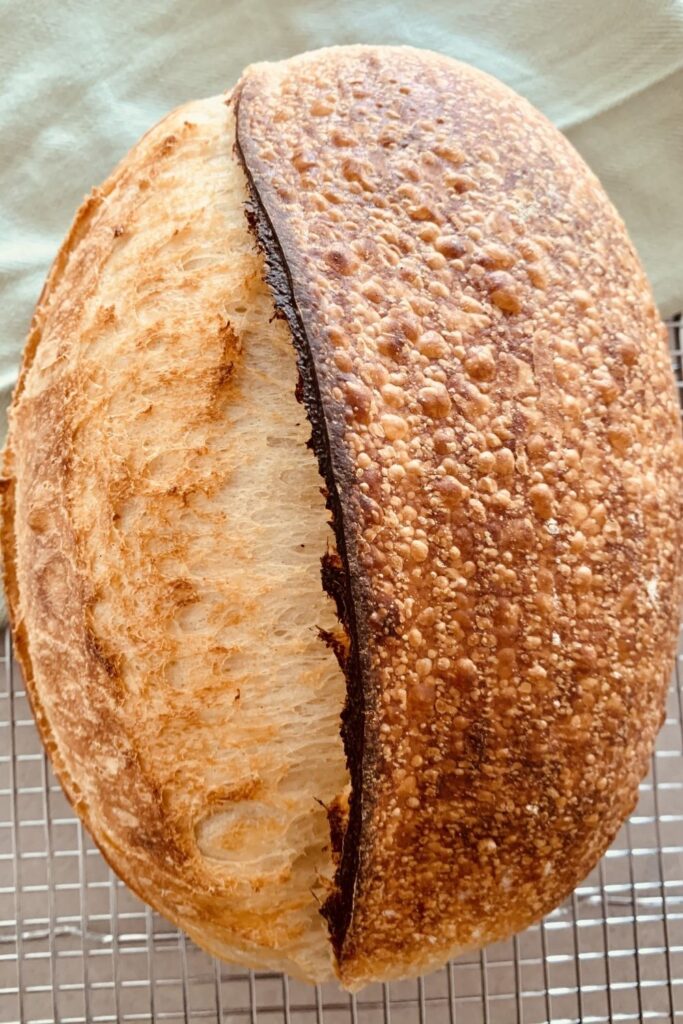
Are Blisters on Sourdough Good or Bad?
It really depends on your personal preference - and where in the world you come from.
In the US, blisters are seen as desirable and the epitome of a successful loaf of sourdough.
In other parts of the world, like France for example, bread dough blisters are often seen as a flaw.
When it comes to sourdough, surface blisters are the result of a long, cold ferment.
They are synonymous with San Francisco Sourdough (along with a rich, dark sourdough crust) and are therefore highly sought after by many sourdough bakers.
So while they aren't loved by everyone, they are definitely desirable when it comes to sourdough because they can signify depth of flavor.
The longer, cold ferment required for the blisters to form, also develops a more sour flavor in your sourdough bread.
They also make a pretty sexy loaf of sourdough, don't you think?
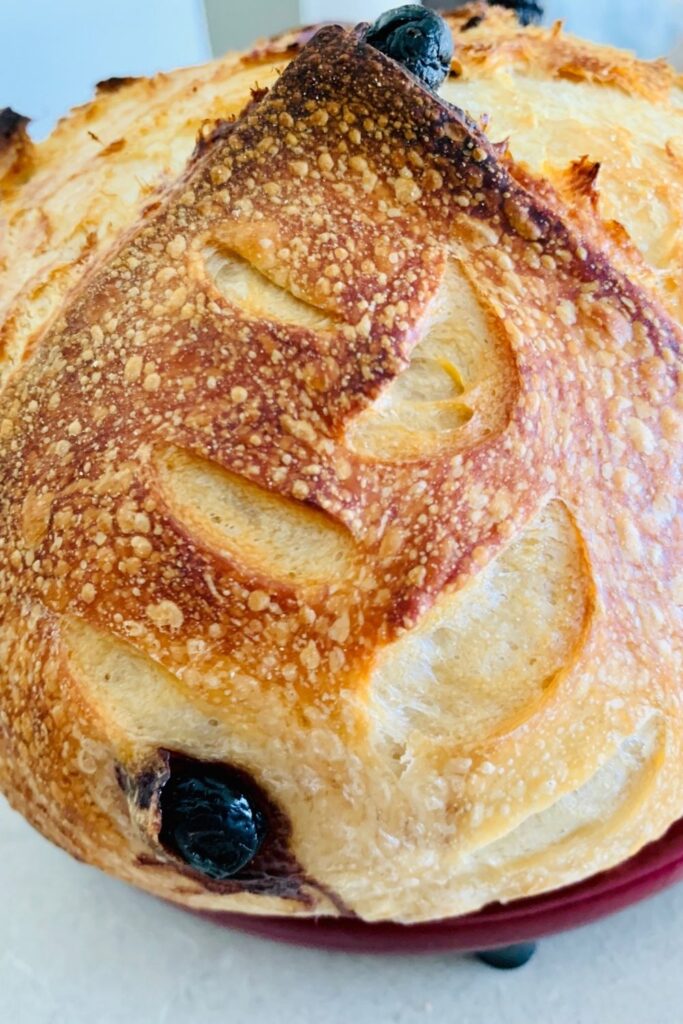
What Causes Blisters on Sourdough?
Surface blisters on a sourdough crust are the result of a long, cold ferment.
Blisters form when C02 slowly leak into the surface of the dough during the cold retard.
The longer the dough stays in the fridge, generally the more pronounced your blisters will be.
The CO2 is retained in the surface of the dough while it's in the fridge. When you bake the bread, the CO2 expands and tries to escape. But it is trapped by the crust which is already starting to form at high baking temperatures.
To really make those blisters pop (see what I did there), you need to use water mist and steam.
The water sits on the surface of the dough and together with the residual sugars, caramelises to form that beautiful blistered, glistening crust.
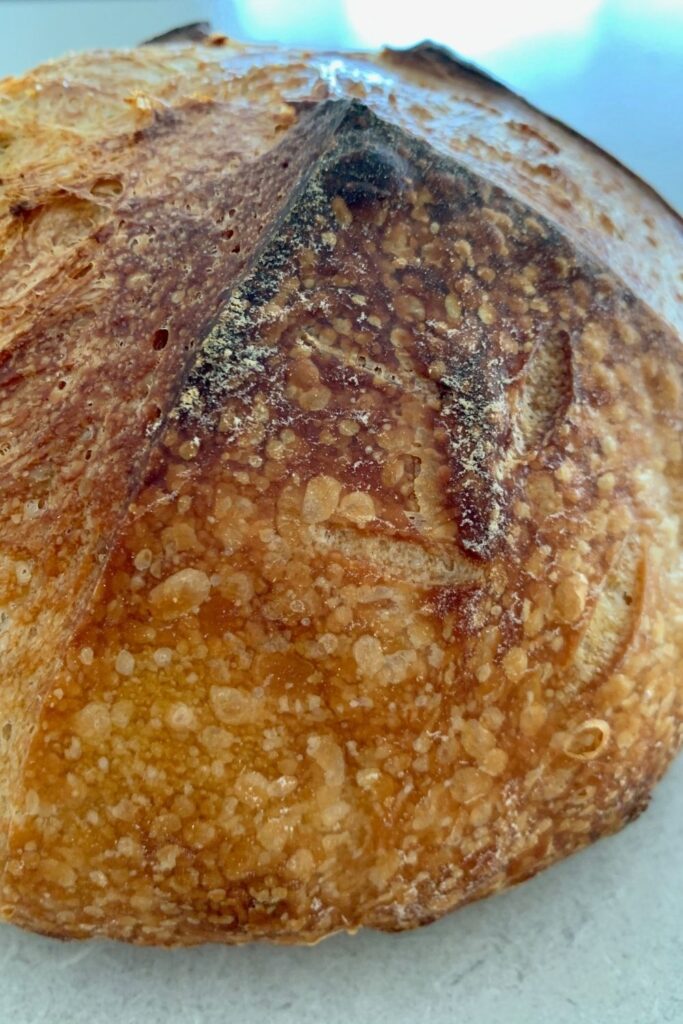
How To Get Blisters On Your Sourdough Crust
Bread dough blisters are just something that will occur naturally if you follow a nice, long fermentation for your dough. My simple sourdough recipe is one such recipe which includes a long, cold ferment.
There are however a few things you can do to ensure that you get that gorgeous shiny and blistered crust every time you bake sourdough.
- Use a lower percentage of sourdough starter - my sourdough recipe uses just 10%, but you can go even lower than this by calculating the ratio using baker's math. The lower amount of sourdough allows a longer fermentation time.
- Ensure the your dough is fermented correctly. If you under ferment the dough, there won't be enough sugars on the surface to enable caramelisation of the crust. If you over ferment it, the yeast will use all the sugars and similarly, there won't be enough left for the crust to caramelise and darken.
- Once the dough is shaped, place it into a banneton and into the fridge for a long, cold ferment. You'll need to ensure that your fridge is 4C or lower (I err towards the lower side). This will allow you to leave the shaped dough in the fridge for up to 36 hours.
- Once you've flipped the dough out of the banneton, you need to spray the dough with water. This sounds simple enough, but you need to really pay attention to this step.
Use a water atomiser, rather than just a regular spray bottle. If you don't have an atomiser, you can also apply the water with a pastry brush.
You need to wash all the remaining rice flour off the dough and ensure that it is wet all over.
- Bake your sourdough inside a Dutch Oven to ensure maximum steam effect. Steam is essential to creating the blisters and giving you a lovely shiny crust.

Is A Dutch Oven Essential For Bread Dough Blisters?
A Dutch Oven is essential to achieving a beautiful blistered sourdough crust.
Unless you have a good quality steam oven that can inject steam into the oven while you bake.
A Dutch Oven is a closed baking vessel (generally made from cast iron) that traps the steam inside, holding it close to the bread dough while it bakes.
This has many positive effects on your sourdough bread. The Dutch Oven creates a steamy and most importantly, a consistent environment to bake your sourdough in.
Without a Dutch Oven it can be difficult to create the steamy environment required to form the blisters on your sourdough bread.
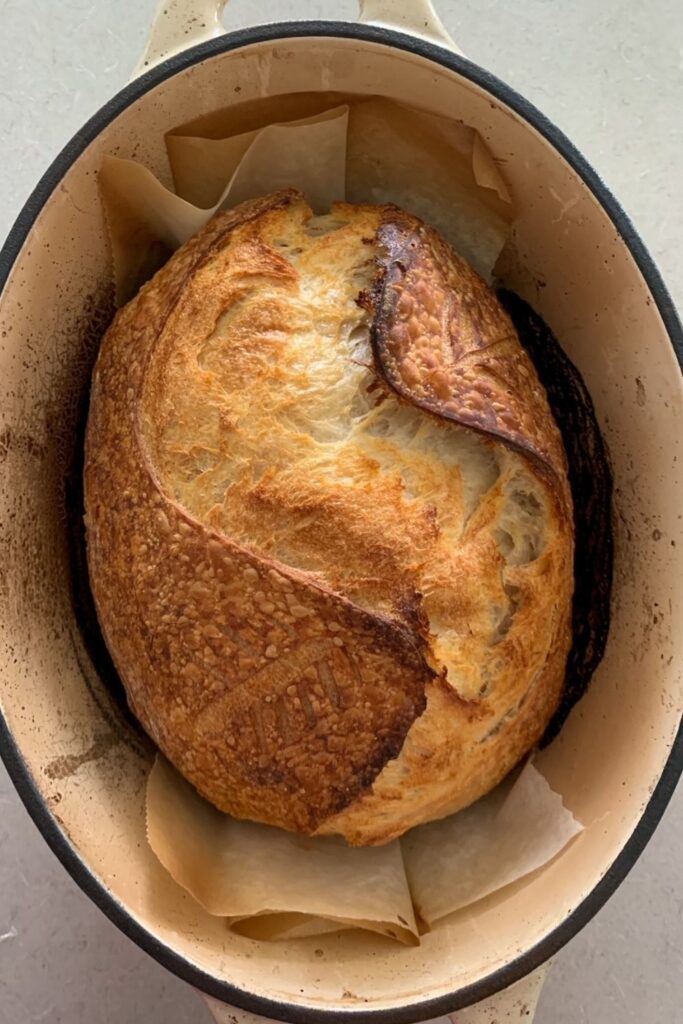
Intricate Scoring Designs & Blistered Sourdough Crusts
Now you might be thinking - but what if I use flour on my dough surface to highlight my intricate scoring designs?
Well the bad news is that if you want to get that super blistery sourdough crust, you won't be able to dust the dough with flour.
In order to get blisters on your sourdough crust, you need to soak the dough surface in water. This water wash will dissolve the flour, rendering it useless.
If you want to use flour and create intricate scoring designs on your sourdough, you will need to stay away from water spray. You may still develop blisters on the surface, but they will not be as noticeable.
And in fact, if you prefer an intricately scored loaf with a dusting of flour as part of that design, a blistered crust may actually not be what you are looking for as it will interrupt your scoring design.
Frequently Asked Questions
Achieving a shiny crust on sourdough is not overly difficult. The crust is affected greatly by the fermentation of the dough. Get this right and your crust will be amazing - thin, crispy, a little chewy - all the good things! Get it wrong and you will be tossing thick, hard, jaw breaking sourdough in the trash. Spray your well fermented dough with water mist before baking in a searingly hot Dutch Oven and you'll achieve that perfect, natural sourdough shine every time!
Blisters on sourdough are caused by the C02 slowly leaking from the surface of the dough. This occurs during a long, cold ferment. Along with blisters, a long, cold ferment will also increase the depth of flavor in your dough and give you that true sourdough flavor.
A thin sourdough crust can be achieved with a higher hydration dough. Lower hydration will generally give you a thicker, tougher crust. Increasing the hydration to at least 70% and up to 80% should give you a thinner, crispier crust on your sourdough bread.
Further Reading
If you've enjoyed learning how to get blisters on sourdough bread, you might enjoy these articles:
- Learn how to get a thinner, crispier crust or even a darker, richer crust on your next sourdough bake.
- Need to boost your sourdough starter? These tips will have your starter bubbling out the jar!
- Want to know the difference between bulk ferment and cold ferment?
